What is a chicken tractor
If you are looking to setup a self sufficient chicken coop this guide will take you one step closer. What is a chicken tractor and how can it benefit your flock as well as keep your property in better shape.
Raising chickens that are doing their job without doing damage at the same time is easier when you utilize this unique approach to free-ranging your flock.
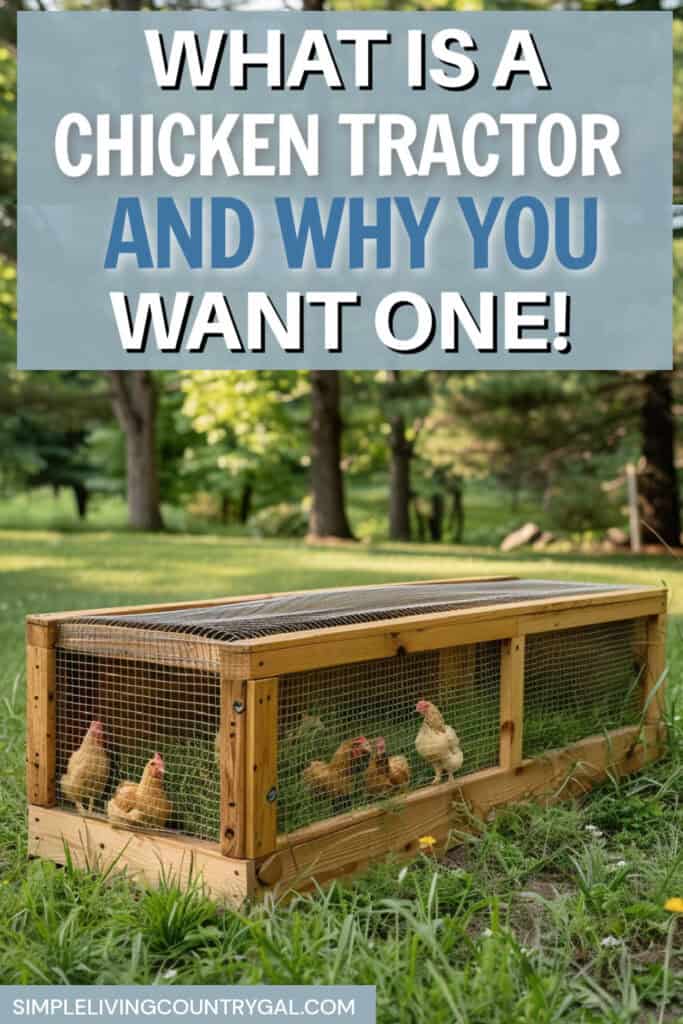
In recent years, raising chickens has grown in popularity from small farms to families living in suburban areas. What may be a hobby to some is a symbol of self-sufficiency to others with a goal of living a simpler, more sustainable lifestyle.
Creating a homestead is becoming increasingly popular, especially with older women who are retired and spend more time at home.
As I get older I am looking for easier ways of doing things. Not only because it is gentler on my back but it is kinder to my daily to-do list. This is true with my home setup, my backyard garden setup, and my chicken coop setup.
Get tips on how to set up a self-sufficient chicken coop here.
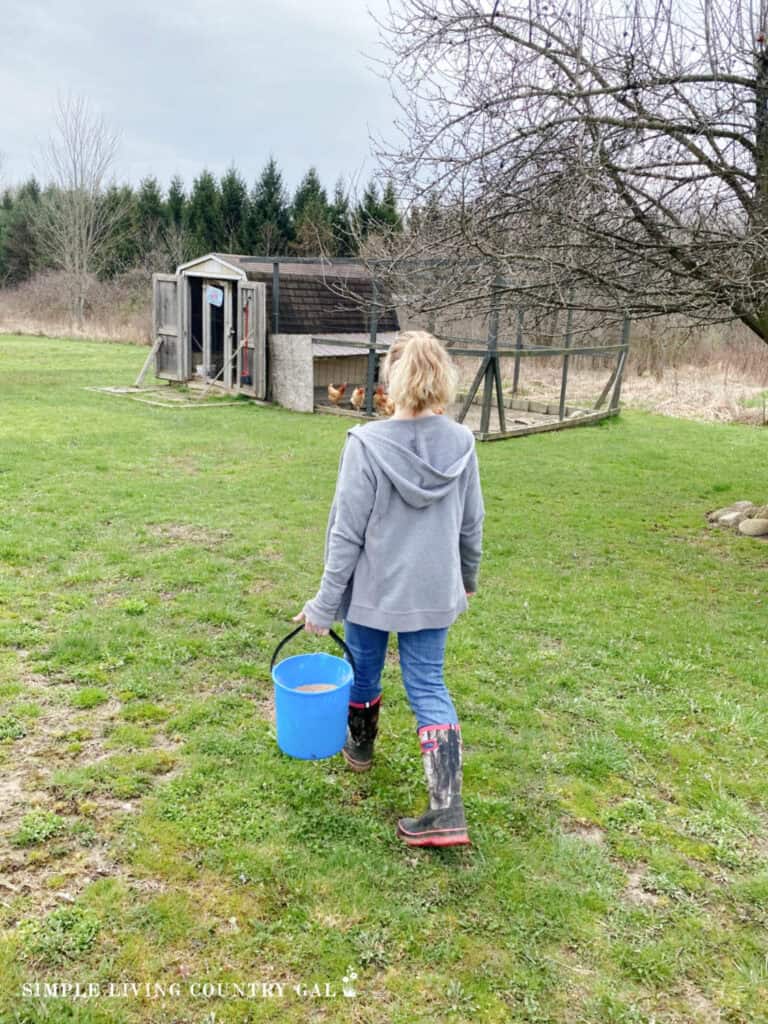
What is a Chicken Tractor?
A chicken tractor is a movable chicken coop lacking a floor, allowing chickens direct access to the ground below. Unlike traditional coops, chicken tractors can be relocated around your property.
The mobility of this setup makes it a game-changer for anyone who is short on space, wants to allow their chickens more access to the land, yet wants to keep that same land healthy.
Why You Need a Chicken Tractor
Not everyone has the room for a large chicken run or the ability to let their chickens free-range throughout the day. A chicken tractor is option number three, allowing you to raise your flock as close to traditionally as you can without actually doing so.
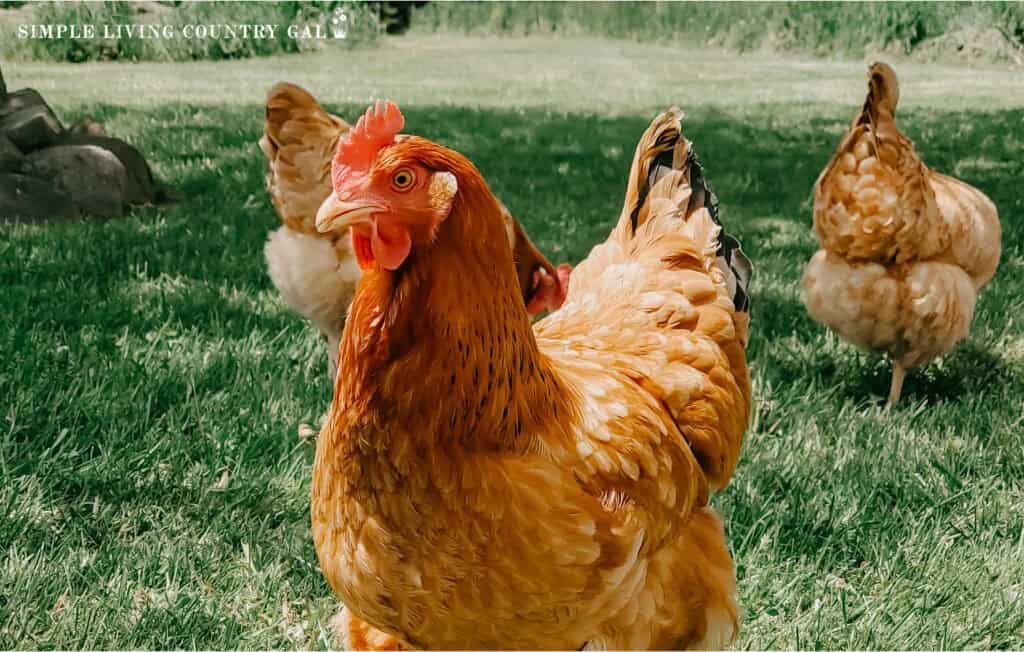
Easier on the Soil
One of the things about raising chickens is they love to scratch at the ground bringing to the surface any worms and bugs. This same scratching can also do quite a bit of damage to grass, gardens, and plants.
One of the best parts of a movable chicken coop is that the land doesn’t become overworked or nutrient-depleted. Every few days you can move the tractor a few feet ahead giving your chickens a new area to explore.
Pest Control
Chickens are natural pest eradicators, making them a great tool to use on your homestead. As they are scratching the ground, they pull up bugs and other pests and quickly eat them. This can be super helpful in giving a healthier growing environment for your gardens.
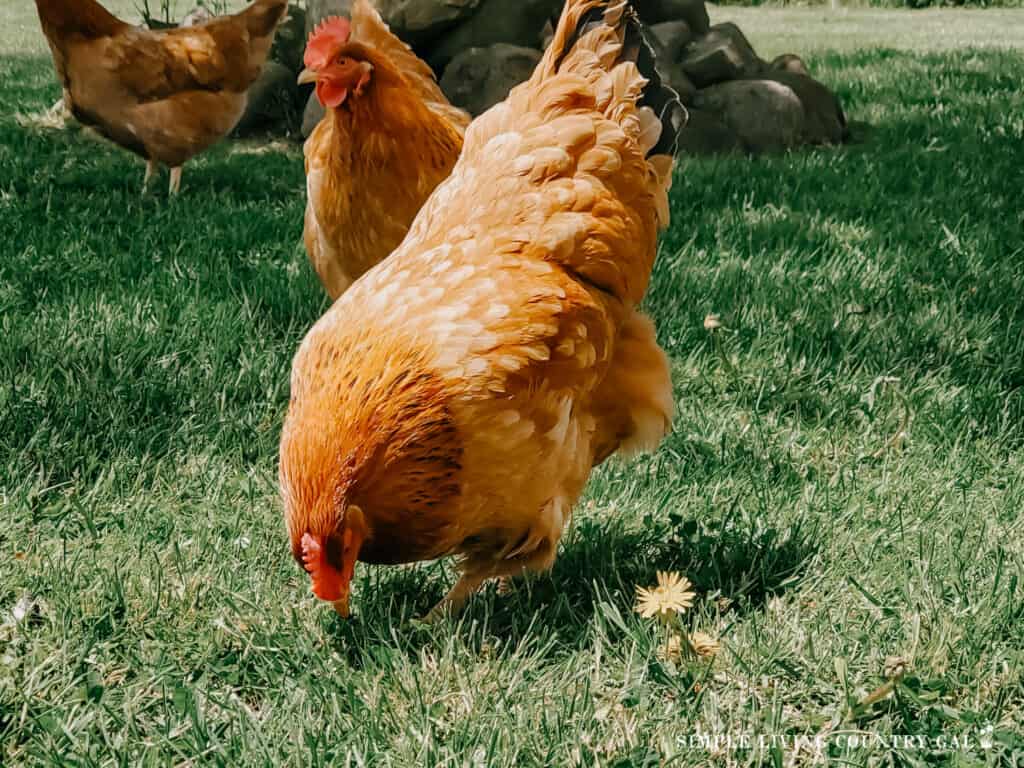
Fresh Forage for Chickens
Moving the tractor means your chickens always have access to fresh ground. This variety in their diet will help you raise healthier chickens, which will give you more nutritious eggs.
Chicken tractors are a genius idea and I would love to thank the person who came up with it. Now, anyone can raise chickens even if they are short on space, have physical limitations, or are short on time.
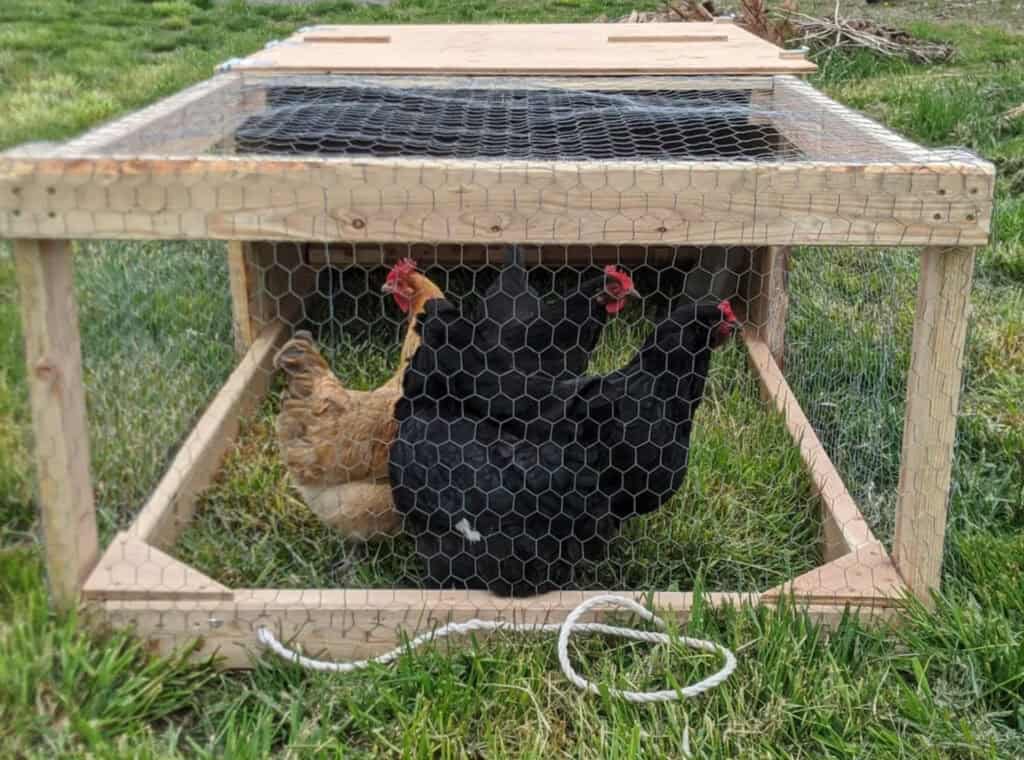
How to Make a Chicken Tractor
Building a chicken tractor is simple when you understand the different parts needed. You may be able to find all the supplies you need lying around, turning that pile of scrap into a portable chicken coop for your hens.
#1. Frame: You will need to have a sturdy frame so it can hold up to be being moved around. Be sure to select lightweight items such as PVC pipes or hemlock.
#2. Walls: For the walls, you can use chicken wire or hardware cloth framed in with hemlock to hold it into place. This will allow for airflow needed on warm summer days yet protect your hens from any predators.
#3. Door: Be sure to have a door or access area so you can get access to your chickens, collect any eggs, or give feed and water as needed. A board with a hinge will work great; just be sure you have a way to lock it into place.
#4. Wheels: Adding wheels to one end can make moving the chicken tractor much easier. On the other end, you can attach a rope, allowing you to relocate it more easily.
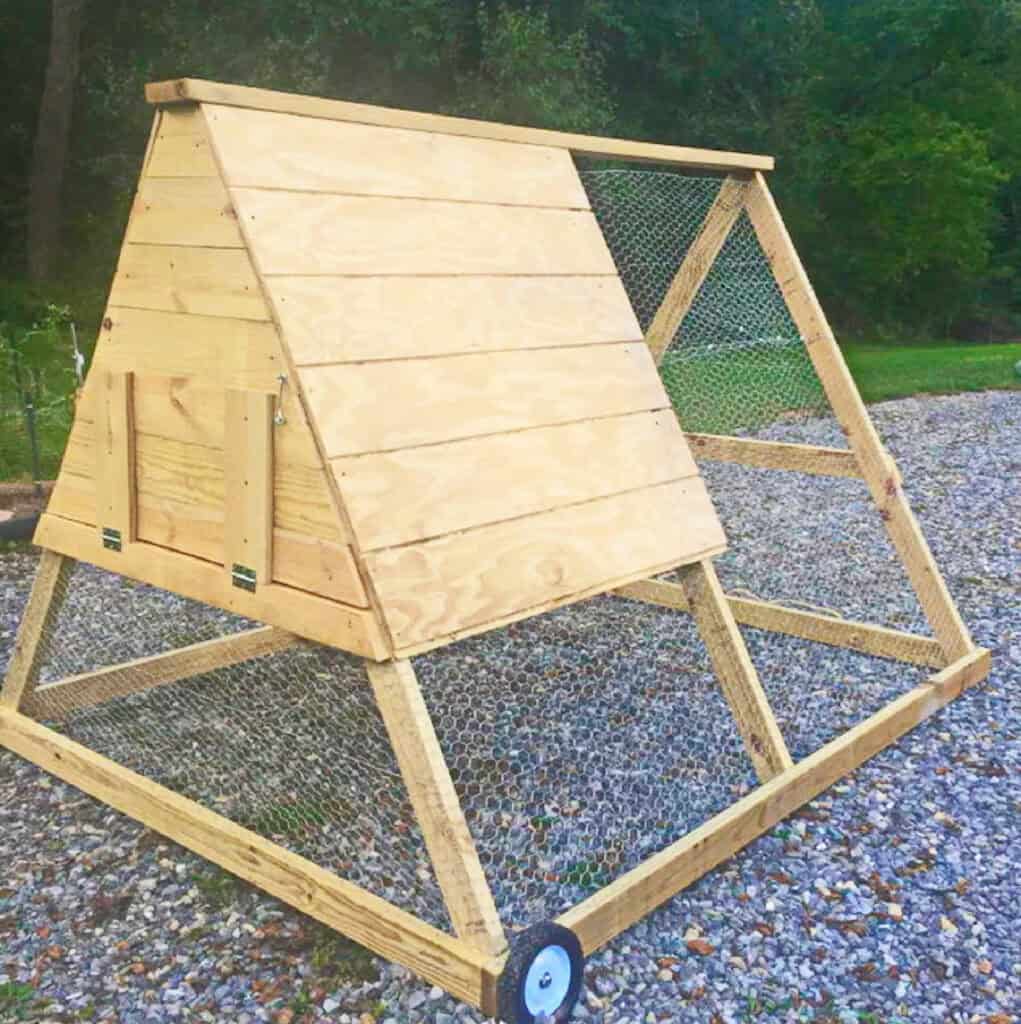
How Does a Chicken Tractor Work?
Once you have your DIY chicken tractor built and ready to use, the next step is to have a routine for moving the coop around as well as caring for the chickens inside.
• Daily Moving Routine: Start each day by moving the tractor to a new spot. Be sure to choose a location that isn’t in direct sunlight all day; if so, you will want to add a tarp over part of the tractor to give your hens shelter to get out of the sun.
Moving the portable coop daily gives your chickens fresh ground to work on and prevents them from damaging any one area of your yard.
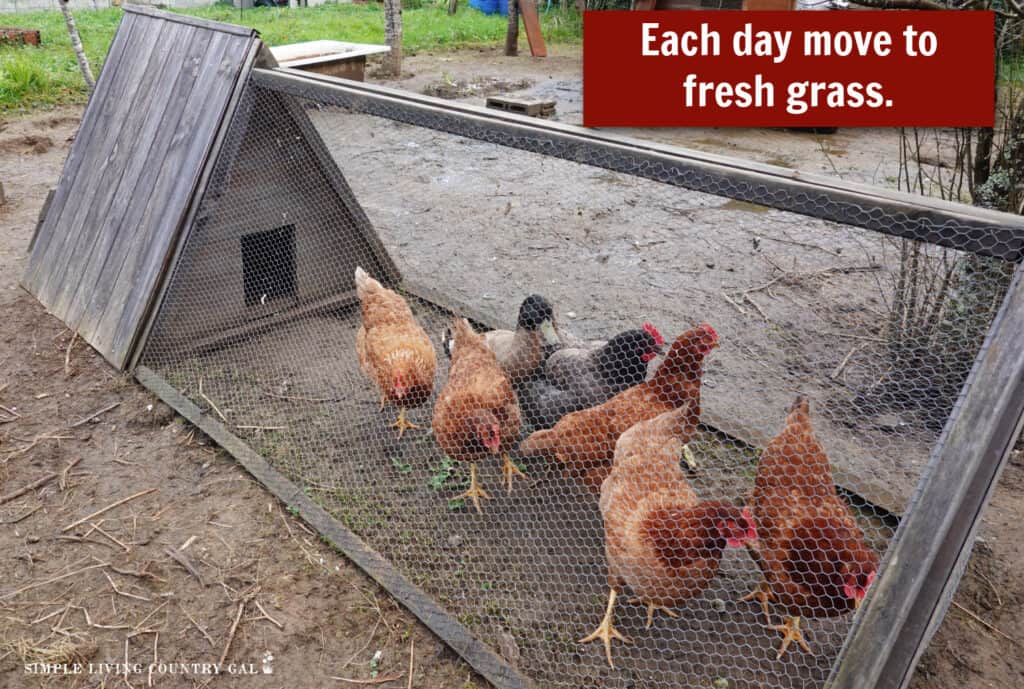
• Feeding and Watering: Be sure there is ample water for the number of hens inside as well as a feeder. You can build a wood platform in the corner of the tractor where you can put a water bowl and another platform for a feeder. Another option would be to hang a feeder and waterer from the top.
• Egg Laying: Chickens will naturally lay eggs in the sheltered part of the tractor. You can build a small enclosed space to act as a nesting area for your hens to lay. Make a setup that will protect the eggs from the weather until you can collect them.
• Routine Maintenance: Every few weeks, check your tractor to make sure there are no openings that may allow something inside. Check the framework, the walls, and the wheels, making any updates as needed.
A chicken tractor is more than just a housing option for chickens it is a way to add hens to your homestead when you may have thought it wasn’t an option.
If you are short on space and time, a chicken tractor is the perfect solution. Use supplies you have on hand and DIY a setup you can start using today.
